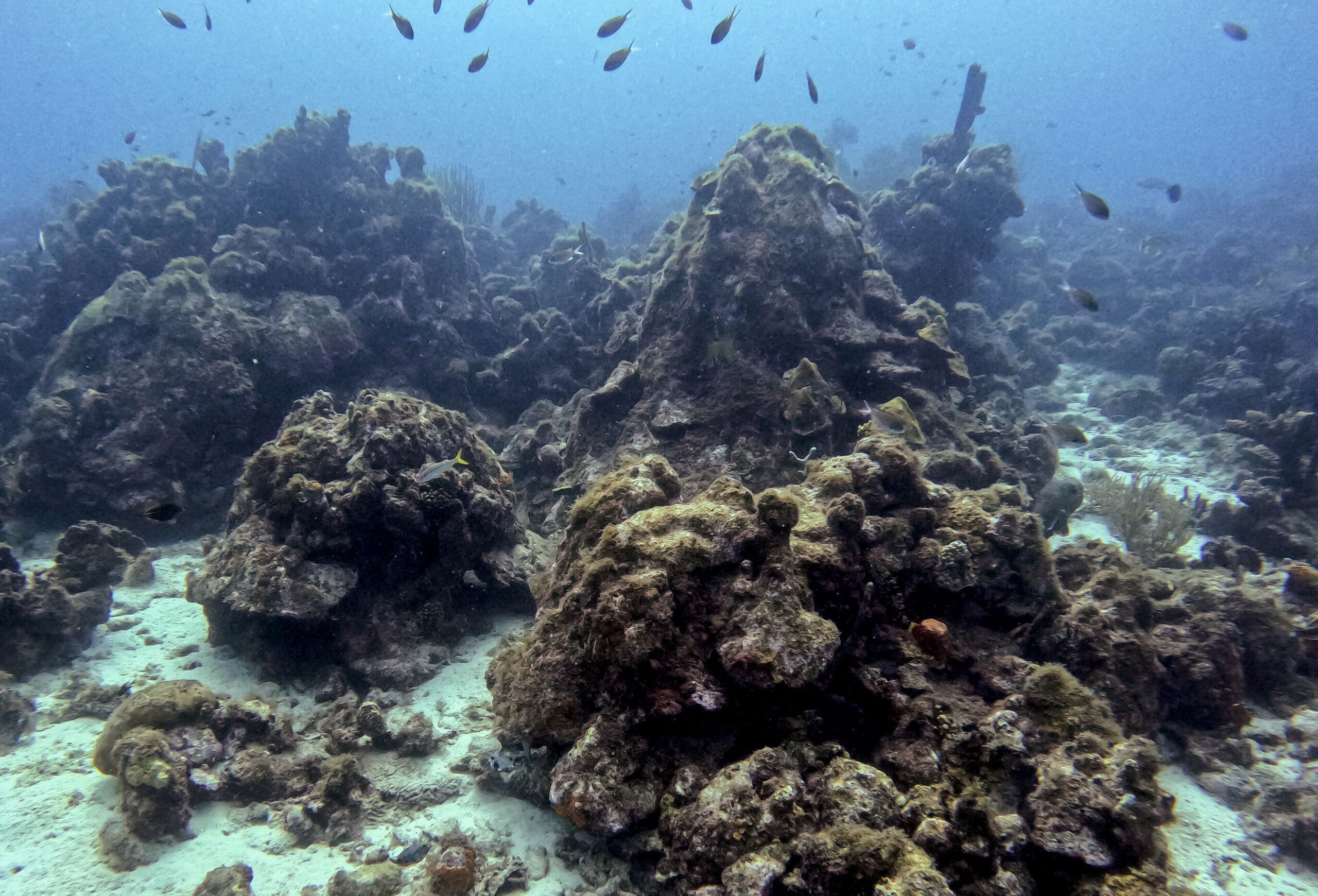Students help drive new research on global marine debris – Virginia Tech News

Report on Global Marine Debris Research and its Alignment with Sustainable Development Goals
Executive Summary
A Virginia Tech study, led by faculty and students, provides a comprehensive analysis of global research on marine debris. The findings highlight the diverse sources and widespread impact of ocean pollution, directly addressing key targets within the Sustainable Development Goals (SDGs), particularly SDG 14 (Life Below Water), SDG 12 (Responsible Consumption and Production), and SDG 11 (Sustainable Cities and Communities). The research underscores the urgent need for improved monitoring, policy intervention, and systemic changes in waste management to mitigate this escalating environmental crisis.
Methodology: Fostering Partnerships and Quality Education (SDG 17 & SDG 4)
The project exemplifies SDG 17 (Partnerships for the Goals) through its interdisciplinary collaboration between the Department of Sustainable Biomaterials and the Department of Geography. It also strongly supports SDG 4 (Quality Education) by providing undergraduate and graduate students with a leading role in data collection, analysis, and manuscript preparation. This hands-on research experience equipped students with the critical skills necessary to contribute to impactful environmental stewardship and sustainable development.
Analysis of Marine Debris: A Threat to Life Below Water (SDG 14)
The study directly confronts the challenges outlined in SDG 14, which aims to conserve and sustainably use marine resources. Marine debris, which costs economies billions annually and harms over 800 species, is a primary obstacle to achieving this goal. The research confirms that pollution has been documented in all marine environments, from coastal mangroves to the deep seabed and remote polar regions, severely threatening marine biodiversity and ecosystem health.
Categorization of Marine Debris
- General Waste: Mixed items, predominantly macroplastics.
- Microplastics: Small plastic fragments and particles.
- Fishing-Related Debris: Abandoned, lost, or discarded fishing gear.
- Ink Cartridges: Attributed to cargo spills.
- Petroleum Waxes: Associated with shipping operations.
Key Findings and Implications for Sustainable Development
The study identified several critical findings that inform strategies for achieving multiple SDGs.
- Debris Distribution is Governed by Natural Forces: The accumulation of debris is often dictated by winds, ocean currents, and coastal geography, highlighting the transboundary nature of the problem and the need for international cooperation as called for in SDG 14.
- Existing Research Focuses on Quantification: Most studies measure the volume of debris, indicating a need for more research into the socio-economic drivers and impacts to better inform policy.
- The Problem is Spreading Globally: The increasing volume and geographic expansion of debris threaten more ecosystems, making the targets of SDG 14 increasingly difficult to achieve without immediate action.
- Monitoring and Technology Gaps Exist: The report calls for improved monitoring systems, including satellites and computer models, to effectively track debris. Such tools are essential for the evidence-based policymaking required to support SDG 11 and SDG 12.
- Sources are Diverse and Systemic: The problem originates from a wide range of sources, linking directly to other SDGs. These include:
- SDG 11 (Sustainable Cities and Communities): Inadequate waste management systems and urban runoff are major contributors.
- SDG 12 (Responsible Consumption and Production): Consumer culture, shipping, fisheries, and aquaculture practices are primary drivers of marine pollution.
Recommendations for Achieving Sustainable Development Goals
Advancing Responsible Consumption and Production (SDG 12)
The study emphasizes that achieving SDG 12 is fundamental to solving the marine debris crisis. It calls for the adoption of circular economy principles and individual actions based on the “R” framework: Refuse, Reduce, Reuse, and Recycle. By making conscious consumer choices and reusing items, individuals can contribute directly to Target 12.5, which aims to substantially reduce waste generation.
Strengthening Sustainable Cities and Waste Management (SDG 11)
To prevent land-based pollution from reaching the ocean, the report highlights the need to improve municipal waste management, a core component of SDG 11. Addressing systemic failures such as open landfills, uncovered transport vehicles, and general litter is critical. Better infrastructure and policies in urban and coastal communities are required to contain waste effectively and reduce the environmental impact of cities.
Conclusion: A Call for Integrated Policy and Action
The research concludes that understanding the pathways of marine debris from source to sea is essential for developing effective policies. By addressing the root causes tied to consumption, production, and waste management, stakeholders can make significant progress toward achieving a sustainable future where marine ecosystems can thrive, in line with the vision of the 2030 Agenda for Sustainable Development.
Analysis of Sustainable Development Goals in the Article
1. Which SDGs are addressed or connected to the issues highlighted in the article?
-
SDG 14: Life Below Water
This is the central SDG addressed in the article. The entire study focuses on “marine debris,” its global distribution from “beaches and mangroves to deep seabeds and even remote places such as Antarctica,” and its detrimental effects on marine ecosystems. The article explicitly states that debris “harms more than 800 species.”
-
SDG 12: Responsible Consumption and Production
The article directly connects marine debris to consumption patterns and waste generation. It identifies “consumer culture” as a contributor and promotes the “R” principles: “Refuse and reduce plastic use whenever possible, reuse items such as printer cartridges… and recycle responsibly.” This highlights the need for a shift towards sustainable consumption and production to tackle the problem at its source.
-
SDG 11: Sustainable Cities and Communities
The article links marine debris to municipal waste management challenges. It points to “urban runoff” as a source and notes that “Many debris problems come from poor management, such as uncovered trucks, open landfills, or litter that gets blown into waterways,” which are issues directly related to waste management within cities and communities.
-
SDG 8: Decent Work and Economic Growth
The economic impact of marine debris is clearly stated. The article mentions that marine debris “costs billions of dollars each year” and affects livelihoods, providing the example of “fishers in the Arctic reporting their boat motors being clogged with plastic marine debris.” This connects environmental degradation to economic losses and impacts on industries like fisheries.
-
SDG 9: Industry, Innovation, and Infrastructure
The need for technological advancement and better infrastructure for monitoring is a key finding of the study. The article states, “Better tools are needed. There are major gaps in monitoring systems,” and suggests that “Technologies such as satellites, specialized databases, and computer models could help track debris more effectively.” This points to the role of innovation in addressing the environmental crisis.
-
SDG 3: Good Health and Well-being
A direct link to human health is made in the second paragraph, which states that marine debris “affects human health.” While not elaborated upon, this connection places the issue within the scope of public health and well-being.
-
SDG 17: Partnerships for the Goals
The article itself is a case study in partnership. It describes a collaboration between two university departments, associate and assistant professors, and both “undergraduate and graduate students.” The global nature of the problem, as described in the article (“touching every coastline and ecosystem”), implies that broader, international partnerships are necessary for effective solutions.
2. What specific targets under those SDGs can be identified based on the article’s content?
-
Target 14.1:
“By 2025, prevent and significantly reduce marine pollution of all kinds, in particular from land-based activities, including marine debris and nutrient pollution.” The article is entirely focused on “marine debris” and identifies numerous land-based sources, including “urban runoff,” “poor management,” “open landfills,” and “litter.”
-
Target 12.5:
“By 2030, substantially reduce waste generation through prevention, reduction, recycling and reuse.” This target is directly supported by the article’s recommendation to follow the “R” principles: “Refuse and reduce plastic use whenever possible, reuse items… and recycle responsibly.”
-
Target 11.6:
“By 2030, reduce the adverse per capita environmental impact of cities, including by paying special attention to… municipal and other waste management.” The article’s identification of “urban runoff” and “open landfills” as sources of marine debris directly relates to this target concerning city-level waste management.
-
Target 9.5:
“Enhance scientific research, upgrade the technological capabilities of industrial sectors in all countries… to encourage innovation.” The study’s conclusion that “Better tools are needed” and the call for “satellites, specialized databases, and computer models” to track debris align perfectly with this target’s focus on enhancing research and technology.
-
Target 3.9:
“By 2030, substantially reduce the number of deaths and illnesses from hazardous chemicals and air, water and soil pollution and contamination.” The article’s statement that marine debris “affects human health” connects the issue to this target, which aims to mitigate health impacts from pollution.
3. Are there any indicators mentioned or implied in the article that can be used to measure progress towards the identified targets?
-
Amount and Type of Debris:
The article explicitly states that “Most research measures the amount of debris.” This serves as a direct indicator for Target 14.1. The article further categorizes the debris (General waste, Microplastics, Fishing-related debris, Ink cartridges, Petroleum waxes), suggesting that tracking the prevalence of these specific types can be a more detailed set of indicators.
-
Geographic Spread of Debris:
The finding that “Debris is not only increasing in volume but also showing up in new regions around the world” implies that the geographic distribution of debris is a key indicator. Monitoring efforts that track the presence or absence of debris in previously unaffected areas, such as the “deep seabeds and even remote places such as Antarctica,” can measure the worsening of the problem.
-
Economic Costs:
The article mentions that marine debris “costs billions of dollars each year.” Quantifying these economic losses to industries like tourism and fisheries serves as an indicator of the severity of the problem and can be used to track the economic benefits of mitigation efforts.
-
Adoption of Monitoring Technologies:
Progress towards Target 9.5 can be measured by the development and deployment of the technologies the article calls for. An indicator could be the number of monitoring systems using “satellites, specialized databases, and computer models” to track marine debris globally.
4. Table of SDGs, Targets, and Indicators
| SDGs | Targets | Indicators Identified in the Article |
|---|---|---|
| SDG 14: Life Below Water | 14.1: By 2025, prevent and significantly reduce marine pollution of all kinds, including marine debris. |
|
| SDG 12: Responsible Consumption and Production | 12.5: By 2030, substantially reduce waste generation through prevention, reduction, recycling and reuse. |
|
| SDG 11: Sustainable Cities and Communities | 11.6: By 2030, reduce the adverse per capita environmental impact of cities, including by paying special attention to municipal and other waste management. |
|
| SDG 8: Decent Work and Economic Growth | 8.4: Improve progressively, through 2030, global resource efficiency in consumption and production and endeavour to decouple economic growth from environmental degradation. |
|
| SDG 9: Industry, Innovation, and Infrastructure | 9.5: Enhance scientific research, upgrade the technological capabilities of industrial sectors in all countries. |
|
Source: news.vt.edu
What is Your Reaction?
 Like
0
Like
0
 Dislike
0
Dislike
0
 Love
0
Love
0
 Funny
0
Funny
0
 Angry
0
Angry
0
 Sad
0
Sad
0
 Wow
0
Wow
0















































/environment-climate-change-and-health-(ech)/water-sanitation-hygiene-and-health-(wsh)/landfill-tuvalu-36092.tmb-1200v.jpg?sfvrsn=5c21fe40_1#)


.jpg.webp?itok=0ZsAnae9#)

























